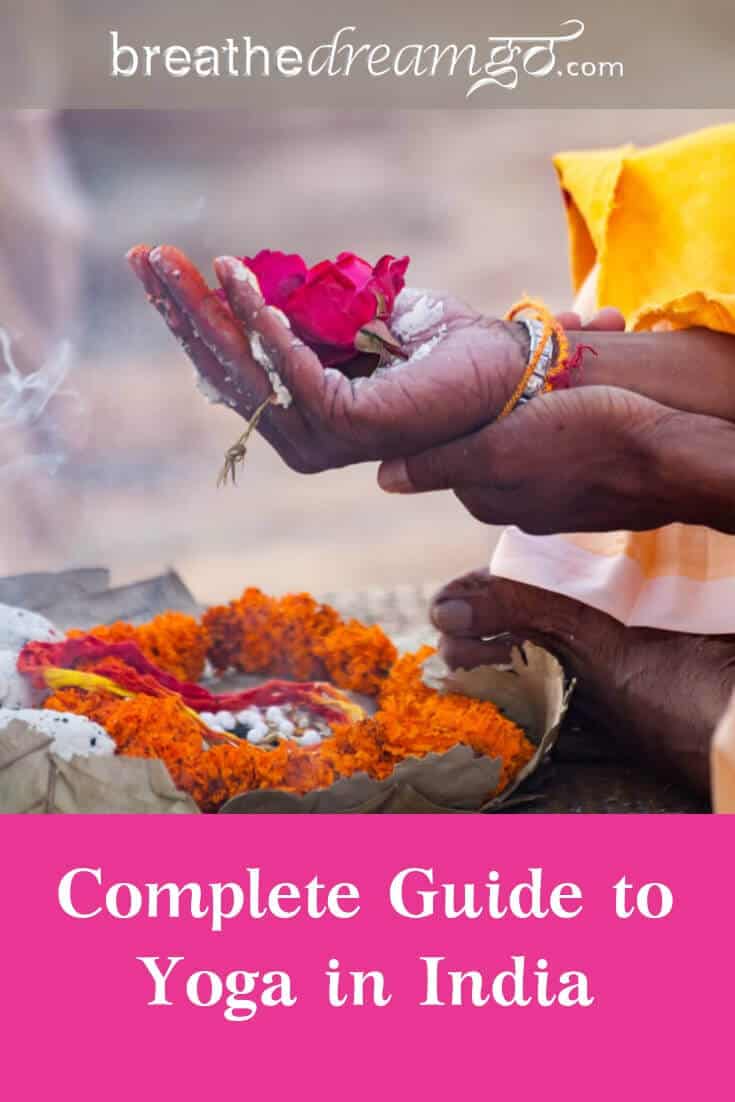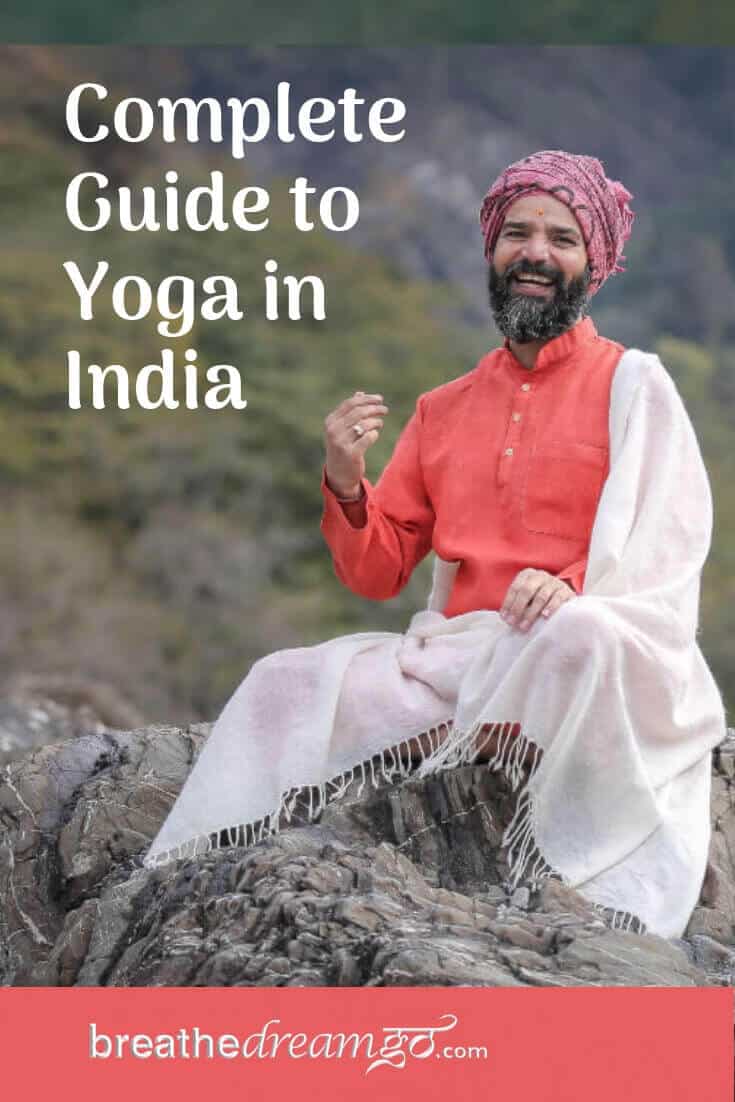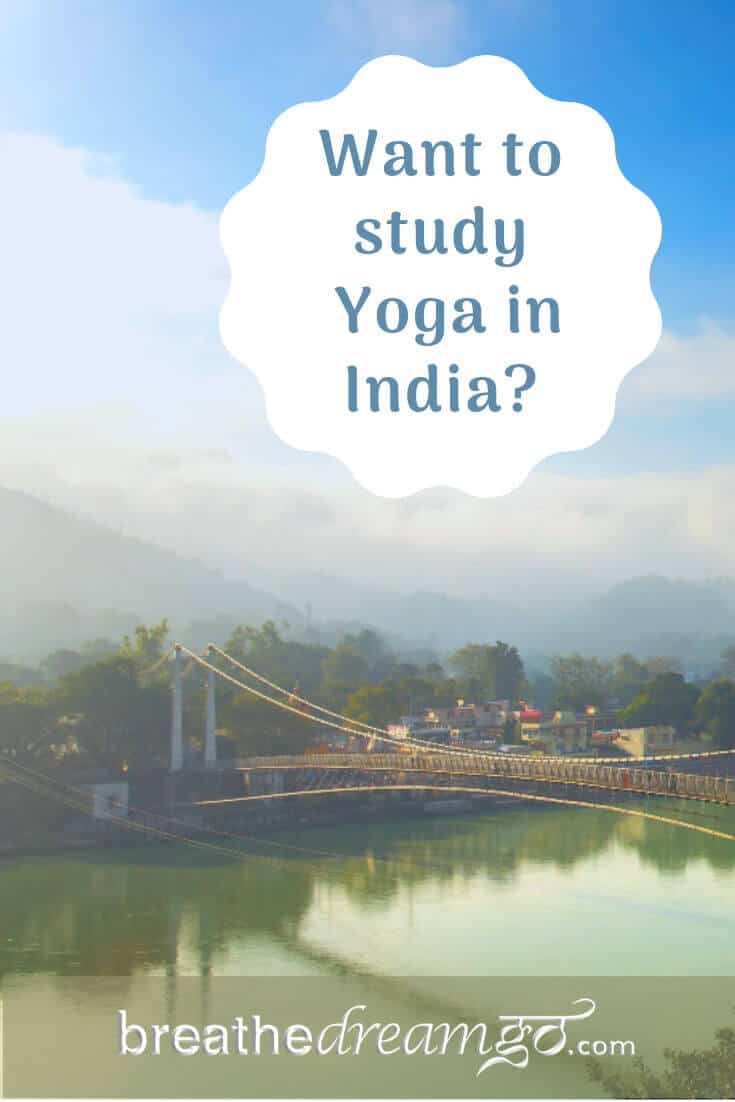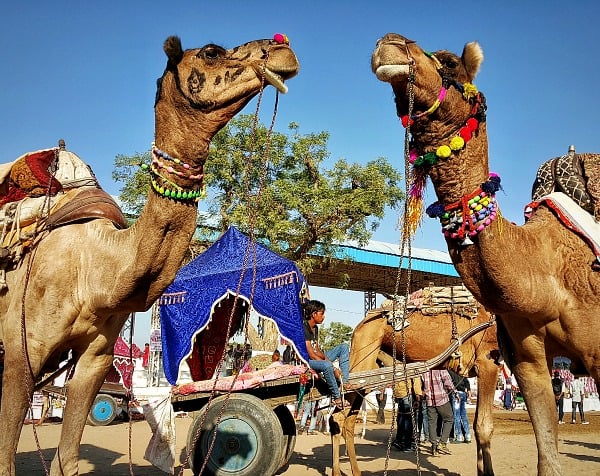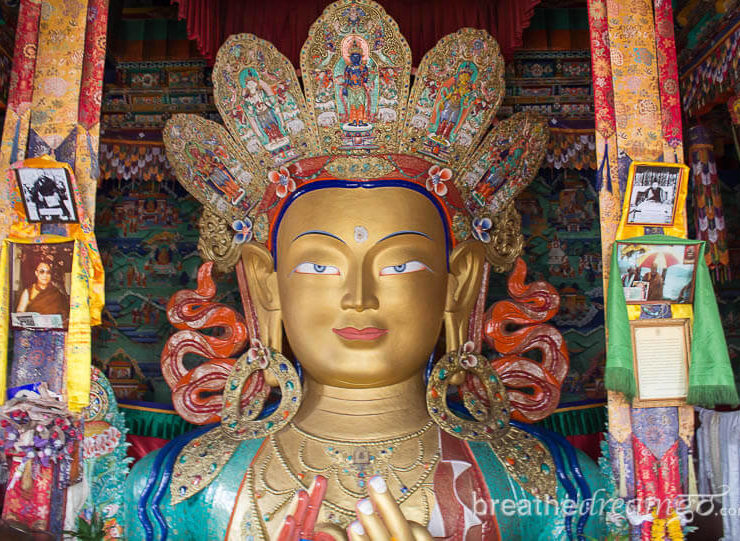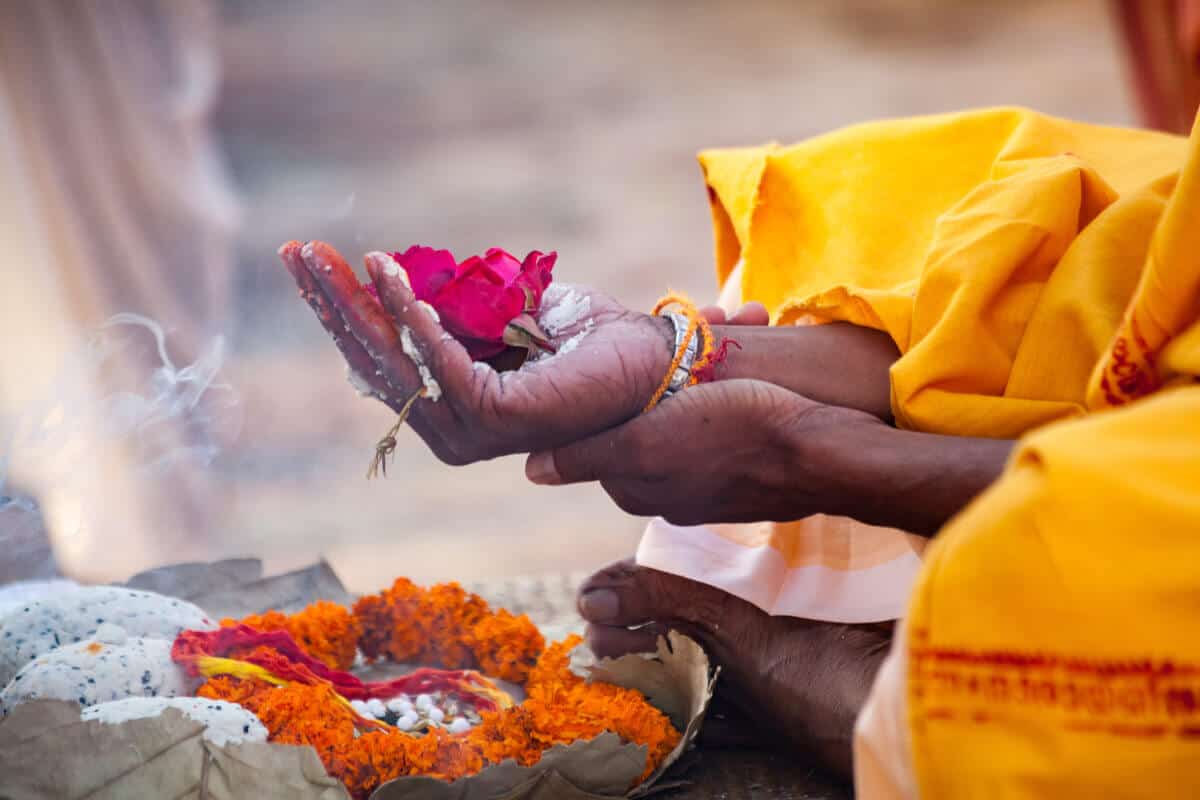
Table of Contents
Complete guide to everything you need to know about Yoga in India
THERE IS NOWHERE on earth like India to study Yoga, to take a Yoga Teacher Training course, or visit a Yoga retreat. If you have not been to India to study Yoga, you cannot possibly know or understand the depth or the truth of this ancient art and science. If you’re serious about it, sooner or later, you must experience Yoga in India. And this guide will help you with everything you need to know.
Yoga belongs to the world. But it has a home. India.
When I started Yoga classes in 1993, little did I know it would change my life. I soon found the benefits of Yoga to be enormous, on every level, and I eventually did a year-long Yoga Teacher Training program. In 2005, I travelled halfway across the world to study Yoga in India and stay at a Yoga ashram. I’ve been committed to Yoga ever since, and have spent a lot of time studying and practising Yoga in India.
This guide is intended to cover Yoga for beginners, everything you need to know about Yoga in India, including Yoga Teacher Training, ashrams, Yoga clothes, Hatha Yoga, Yin Yoga, Yoga retreats in India and much more. Plus, I will be adding to it regularly, and creating other Yoga guides – such as one specifically all about Rishikesh. So let’s answer all of your questions about Yoga in India, from my extensive personal experience. And you can always contact me by email if you have any questions (or via Facebook, Twitter, or Instagram).
Note: I would like to recognize the origins of Yoga as a school of Hinduism, an art and science that has been fostered from time immemorial in India. As someone who is not from this culture, I owe respect and gratitude to the Yoga teachers and traditions that I have learned and benefitted from. Pranam to all.
Popular questions about Yoga in India
- Where can I learn Yoga in India?
- What is Yoga?
- How is Yoga in India different than the west?
- How can I find out about Yoga for beginners in India?
- Is Yoga popular in India?
- Why study Yoga in India?
- Where can I learn Yoga in India?
- What are the best Yoga Teacher Training programs in India?
- What should I wear to do Yoga in India?
- What are Yoga ashrams in India like?
- Where did Yoga start in India?
- How do I apply for an Indian Visa to attend a Yoga course?
Coming Soon:
- Are there Yoga tours in India
- What is International Yoga Day
- What vaccinations do I need for India?
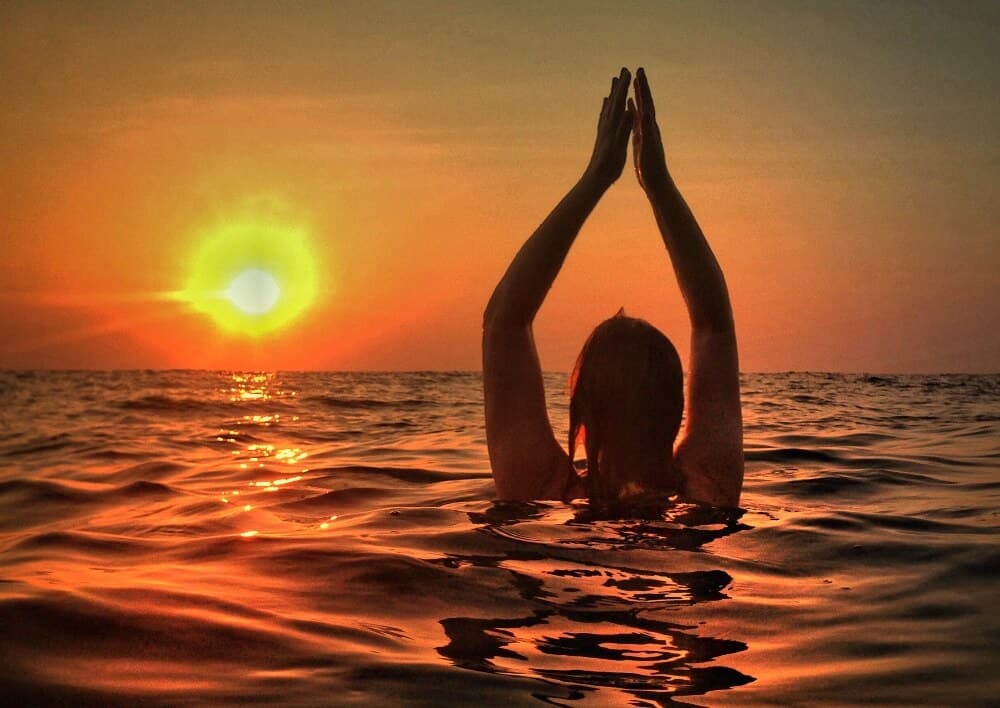
Why am I qualified to recommend Yoga?
I have been drawn to the wisdom of India since I was a teenager, and doing Transcendental Meditation, but didn’t start taking regular Yoga classes until 1993. I went twice a week to the YMCA in Toronto, where I was taught by a small-but-mighty Kundalini teacher named Simran, who hailed from Scotland. A few years later, after I experienced a series of devastating losses, I threw myself into Yoga to recover from depression, and religiously attended Bibi’s three classes per week for 10 years. In 2004, I completed a year-long Yoga Teacher Training program with Yoga Space in Toronto and became a certified Yoga Teacher.
Yoga was one of the main reasons I felt compelled to journey to India in 2005 for six months. I did a one-month Yoga intensive course at the Krishnamacharya Yoga Mandiram in Chennai, visited several ashrams throughout the country, and found my spiritual home at Aurovalley Ashram near Rishikesh in May 2006. Since that time, I have spent many months at Aurovalley Ashram, and also at Anand Prakash Ashram in Rishikesh, and I am devoted to this practise. Yoga is a huge part of my life – in fact, I lived in Rishikesh, India, which is called the Yoga capital of the world, for four years.
If you are planning to travel in India, let us help you! We offer itinerary planning, India for Beginners custom tours, and much more to make sure your trip to India is filled with more magic … and less madness. Check out our Yoga, Spirituality, and Nature trip.
Studying Yoga in India was eye-opening to say the least. I realized that though I was deeply involved in Yoga in Canada, I was swimming in a pond. In India, I discovered the ocean. The Yoga ocean is a vast repository of wisdom and experience. And it’s not about being flexible. Yoga is so much more than what is generally presented or understood in the west; it is so much more than a system of exercises. It is way to self-realization, to peace, to increased consciousness and connection. In India, while studying Yoga, my mind opened up to ideas I never imagined. And this is a common experience for many people who make the journey to India for Yoga.
What is Yoga … and what it is not
Yoga is Sanskrit for union or yoke. It means to link, to connect. It is the experience of connecting to yourself and the nurturing source reality that you cannot be separated from. The purpose of Yoga is to still the mind so that you can experience this connection. Yoga is not actually something you do – you cannot “do” Yoga. Yoga is an understanding.
This may not sound exactly like what you are taught in Yoga classes and Yoga studios around the world. But as you proceed on your Yoga journey, you may find yourself wanting to try and understand the original intentions of yoga, without the overlay of western thinking, ideas, and culture.
Yoga strengthens the body, calms the mind, and softens the heart.
You may start doing Yoga with the idea of getting in shape, looking good in Yoga pants, or gaining more flexibility. You may invest in all kinds of Yoga clothes, props, and accessories, and may have an ideal or goal in mind – such as attempting to look like the cover of Yoga Journal.
But this is not Yoga. Yoga is not about achievement and it’s not about props. Yoga is not a systematic, linear process intended to get you somewhere. That is western dualistic thinking. Yoga comes from an ancient non-dualist tradition.
I like the way Yoga teacher Mark Whitwell explains it. “Yoga is intimate participation in the given reality, it’s the embrace of ordinary reality, the celebration of intimacy and attachment. It’s an interior process where you consciously breathe into your body and experience an intimate relationship with the marvel that is you.”
Yoga creates oneness within and harmony with nature.
T.K.V. Desikachar said, “The success of Yoga does not lie in the ability to perform postures but in how it positively changes the way we live our life and our relationships.”
Yoga is a conduit to joy
For Yoga, you just need a body and breath. Yoga is available at any time, to everyone. It doesn’t take money, skill, flexibility, special equipment. It’s an attitude adjustment more than anything else, and it just requires your breath and your attention.
Yogrishi Vishvketu said, “The essence of yoga is to bring freedom. And to believe and trust, to practice, and to help people to connect to their true nature of being fearless, blissful, joyful and playful.”
How can I find out about Yoga for beginners?
Yoga students from the west are very well received in India and there are lots of programs developed specifically for them. Sincerity is the only requirement; experience is not necessary. If you are a beginner to Yoga, never worry. Yoga should be taught in such a way as to appeal to beginners as well as advanced students.
Is Yoga popular in India?
Yes … and no. Yoga in India may not be what you think, and it’s wise to leave preconceived ideas at home. The idea of Yoga classes and styles is new to India – that’s largely a western development – but the philosophy of Yoga is deeply ingrained in the culture.
India has its own Yoga gurus, and some are well-known such as T. Krishnamacharya, B.K.S. Iyengar, K. Pattabhi Jois, and Swami Sivananda. But many of them focus more on spiritual philosophy, like Sri Sri Ravi Shankar or pranayama, like Baba Ramdev.
However, Yoga in India is gaining in popularity in part because of the worldwide interest and in part because of the Indian government. Prime Minister Narendra Modi initiated International Yoga Day in 2015 and the resolution was supported by 177 nations at the United Nations General Assembly. International Yoga Day takes place each year on June 21.
Why study Yoga in India?
I have a strong opinion on this and others may not agree with me (and that’s okay). But I feel, if you have not been to India to study Yoga, you cannot possibly know or understand the depth or the truth of this ancient art and science.
Yoga belongs to the world. But it has a home. India.
Yoga is part of the culture of India, it is one of the six schools of Hinduism (and the majority of Indians are Hindu). In fact, in some ways, you cannot separate Yoga from the culture that gave birth to it. In the attempt to transplant Yoga to the west, we have seen what happened: it became focused on the physical practise of Yoga, asana, and achievement. The essence of Yoga was lost in translation.
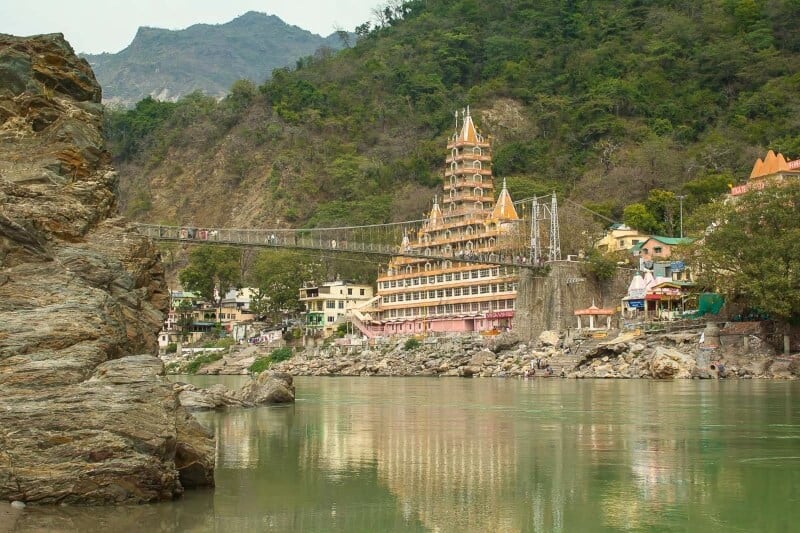
Where can I learn Yoga in India?
There are innumerable Yoga ashrams in India, but many of them cater to Indians and would therefore be unsuitable to most foreigners. The major centres in India where Yoga for foreigners is found are:
- Rishikesh
- Himalayas
- Mysore
- Chennai
- Goa
- Dharamsala
Rishikesh is the Yoga capital of the world and foreign students flock there. There are many, many ashrams, courses and programs available – some are more suitable for foreigners than others. But beware: many fly-by-night operators are opening Yoga schools to capitalize on the Yoga boom. There are far more conmen and scam artists in Rishikesh than authentic, genuine, skilled Yoga teachers.
I lived in Rishikesh for several years and can recommend some excellent teachers and ashrams. Otherwise, I strongly advise you to seek a personal recommendation from a trusted teacher in your home country. I went on a popular site that allows you to book Yoga retreats online, and found 31 pages of Yoga Teacher Training courses listed (372 in total). There is NOT A CHANCE that all 372 courses are of equal value or quality, or worth the trip to India.
Yoga is popularly thought to have originated in the Himalayas, and the Yoga tradition is still very strong in places like Uttarakhand, where Rishikesh is located. The further up you go into the hills, to places like Uttarkashi, the more authentic your experience of Yoga will be.
The well-known K Pattabhi Jois Ashtanga Yoga Institute is located in Mysore. It’s a charming mid-sized town in Karnataka with several Yoga centres to choose from and a thriving Yoga culture.
Chennai is home of the Krishnamacharya Yoga Mandiram, one of the most respectable places to study Yoga in India. I did a one-month intensive course there, and it was excellent.
Traditionally, Goa is not a Yoga centre, however some very good Yoga retreat centres have sprung up to cater to demand. I liked the Ashyiana Yoga Centre in North Goa, and there are others that are recommended.
Like Goa, demand has created a Yoga culture in Dharamsala and Yoga retreats and centres have sprung up. Rishikesh and Dharamsala are on my list of top spiritual places in India you must visit.
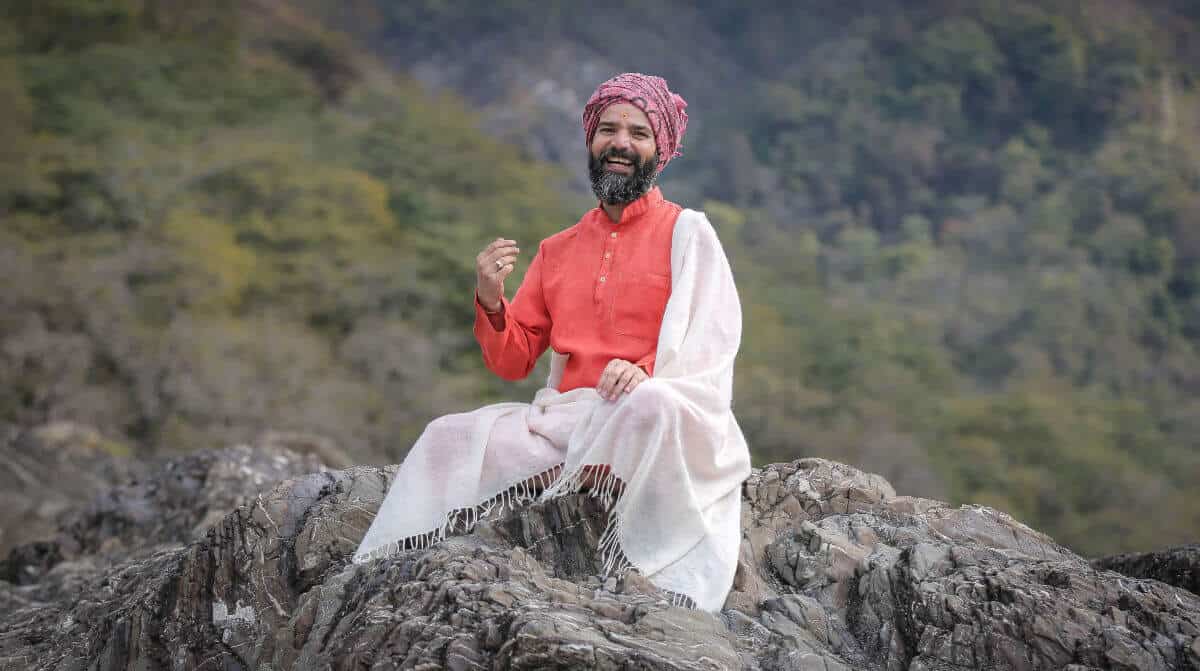
What are the best Yoga Teacher Training programs in India?
Listed below are some of the best ashrams and organizations for foreign students. My recommendations are based on personal experience and trust in the organization and the teachers. There are many others of course.
Anand Prakash Yoga Ashram, Rishikesh
My top recommendation for a Yoga Teacher Training program in India is Anand Prakash Yoga Ashram in Rishikesh. Founded by Yogrishi Vishvketu, the ashram is home to Akhanda Yoga, a system developed to encompass all of the teachings of Yoga. Here, you will find the authentic teachings of Yoga, taught by someone who lives and breathes the Yogic lifestyle.
Yogrishi Vishvketu is known for his infectious laughter, playfulness, and approachable teaching style. He offers Western students a grounded, knowledge- and experience-based approach to Yogic spiritual life and teachings. Vishva-ji, as we call him, has been training in the lower Himalayas since he was 8 years old and has a PhD in Yoga Philosophy. I’ve known him for about 15 years, and I call him the Master of Bliss. You can read much more about Vishva-ji, Akhanda Yoga, and Anand Prakash Yoga Ashram in this post, The meaning of Yoga: Interview with a Master.
International Sivananda Yoga Vedanta Centers
Sivananda is world-wide organization that specializes in Yoga teacher training. Swami Sivananda founded the organization in Rishikesh, but their training program is at their ashram in Kerala, near Trivandrum. It’s a very popular place, situated in a lovely, lush area of beautiful Kerala near Neyyar Dam.
Yoga Niketan, Rishikesh
Yoga Niketan Ashram is one of the most established Yoga ashrams in Rishikesh, and has a large, leafy campus on the bypass road between Lakshman Jhula and Ram Jhula. At Yoga Niketan, you will get a traditional and authentic experience of Yoga and pleasant surroundings. It is away from the busyness of Tapovan, where the Yoga “scene” has developed.
Aurovalley Ashram, Rishidwar
Aurovalley Ashram is a quiet ashram located about halfway between Haridwar and Rishikesh in the Shivalik Hills, the foothills of the Himalayas. It is a peaceful spot with profound, healing energy. I’ve been countless times, it is my spiritual home. The beautiful, spacious ashram is a garden, surrounded by meadows and ringed by a national park. Founder Swami Brahmdev teaches the Integral Yoga of Sri Aurobindo and The Mother. Here, the philosophy is “all life is Yoga.” There are no programs or courses, and it is in a somewhat isolated location. It is an ashram best suited to people who do not need structure, and who are more advanced in their spiritual path. The emphasis is on meditation, satsang, and spiritual enquiry – not asana.
Ashtanga Yoga Research Institute, Mysore
Pattabhi Jois developed Ashtanga Yoga, which became a world-wide phenomenon. The highly venerated teacher has passed away, but his Yoga shala is still going strong. It is situated in beautiful Mysore, which is also a Yoga centre. You will have to sign up in advance for courses as they fill up. It’s a very popular spot
BKS Iyengar Yoga, Pune
BKS Iyengar is probably one of the world’s most famous Yoga teachers. His centre in Pune, near Mumbai, attracts students from all over the world.
Krishnamacharya Yoga Mandiram, Chennai
Krishnamacharya was considered to be the teacher of teachers (Iyengar and Pattabhi Jois were among his students). This teaching centre is highly regarded and is perhaps the best place to learn therapeutic Yoga. Krishnamacharya Yoga Mandiram is located in a very urban area of Chennai, India’s fourth largest city (formerly called Madras).
Note: You can also try a Wellness and Yoga Retreat in Bali.
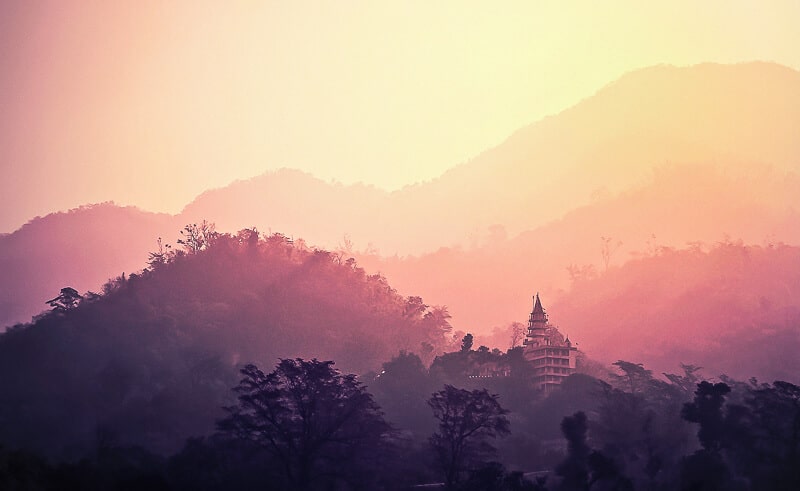
What should I wear to do Yoga in India?
Indians traditionally do not wear any special clothing to do Yoga. Indian clothes are loose and made of cotton, and therefore cool and comfortable. In a hot climate, this is the preferred clothing. You can buy loose and modest clothes suitable for Yoga in India, in almost any market and certainly in the markets of Rishikesh. Tight-fitting spandex Yoga pants and skimpy tops are not appropriate and won’t be comfortable.
More reading on Breathedreamgo
- How to use the toilet in India and use water instead of toilet paper
- Boost your immune system and stay healthy with Yoga
What are Yoga ashrams like?
Yoga ashrams are places of solitude and surrender. They are designed to help you take a break from your responsibilities and obligations in the world, and live in contact with your inner world for a time. In this day and age, this is perhaps the greatest luxury! Read my lengthy post on staying at a Yoga ashram in India here.
Where did Yoga start ?
No one really knows exactly when or where Yoga started in India, it is lost in the mists of time. However, in Hindu culture, the first Yoga teacher was Shiva, who taught Yoga to his wife Parvati. In the Bhagavad Gita, Krishna taught Arjun the philosophy of Yoga to help him resolve his dilemma. Historically, there is archaeological and textual evidence that suggests Yoga is at least thousands of years old.
Several hundred years ago, Patanjali complied the Yoga Sutra, and is considered the “father” of modern Yoga. In the 20th century, T. Krishnamacharya and Swami Sivananda both created a lasting impact. Krishnamacharya’s students include T.K.V. Desikachar (his son), B.K.S. Iyengar, and K. Pattabhi Jois (founder of Ashtanga Yoga).
“The theme of Yoga and self-realization is found in the earliest Indic texts, the Vedas and Upanishads and this becomes codified as the Yoga Sutra about 2,000 years ago, giving a well-defined path and practices. Other, related paths were also developed and codified over this time, like Buddhism, Jainism, and later Tantra,” according to Dr. Pankaj Seth. Dr. Seth is a Naturopath with a focus on Ayurveda, Yoga, and Pranayama.
“In the Bhagavad Gita different types of Yoga are mentioned, such as Karma Yoga (service), Bhakti Yoga (devotion) and Janana Yoga (knowledge), once again giving individuals a choice according to their aptitude.
“The Yoga Sutra of Patanjali contains an eight-fold path, beginning with ethical considerations and leading to meditation. This text does not list postures other than the seated meditation pose and the mention of postures familiar today occurs in later Yoga texts as an assistance to the practise of meditation.”
How do I apply for an Indian Visa to attend Yoga courses?
Most people will need to apply for an Visa to India, even just for tourism. Read my detailed and updated Guide to applying for an Indian Visa here. There’s a section for Yoga students.
Namaste! Thank you for reading.
PIN it on Pinterest
If you are planning to travel in India, let us help you! We offer itinerary planning, India for Beginners custom tours, and much more to make sure your trip to India is filled with more magic … and less madness.
If you enjoyed this post, you can….
Sign up to The Travel Newsletter in the sidebar and follow Breathedreamgo on all social media platforms including Instagram, TripAdvisor, Facebook, Pinterest, and Twitter. Thank you!


